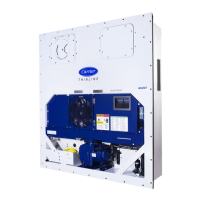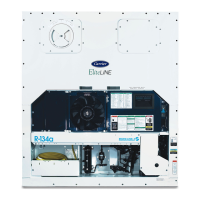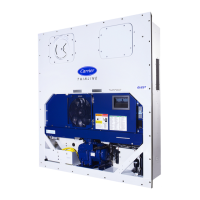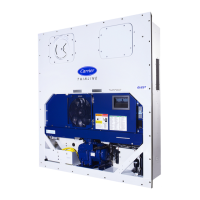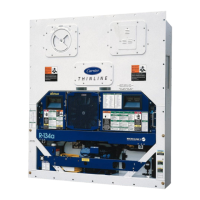T-365 7–30
TP 1 - Not used in this application.
TP 2 - Enables the user to check if the high pressure switch (HPS) is open or closed.
TP 3 - Enables the user to check if the water pressure switch (WP) contact is open or closed.
TP 4 - Enables the user to check for power availability to the DUV contact TD.
TP 5 - Enables the user to check if the internal protectors for the evaporator fan motors (IP-EM1 or IP-EM2) are
open or closed.
TP 6 (IF EQUIPPED) - Enables the user to check if the controller liquid injection valve relay (TQ) is open or closed.
TP 7 - Enables the user to check if the controller economizer solenoid valve relay (TS) is open or closed.
TP 8 - Not used in this application.
TP 9 - The chassis (unit frame) ground connection.
TP 10 - Enables the user to check if the heat termination thermostat (HTT) contact is open or closed.
Figure 7.21 Controller Section of the Control Box
7.24.3 Controller Programming Procedure
The unit must be OFF whenever a programming card is inserted or removed from the controller
programming port.
1. Turn unit OFF, via start-stop switch (ST).
2. Insert software/programming PCMCIA card containing the following (example) files into the programming/
software port. (See Figure 7.21):
menuDDMM.ml3, this file allows the user to select a file/program to upload into the controller.
cfYYMMDD.ml3, multi-configuration file.
3. Turn unit ON, via start-stop switch (ST).
Controller Software
Programming Port
Mounting Screw Controller
Test
Points
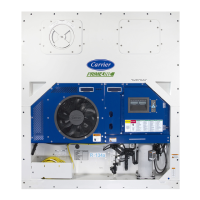
